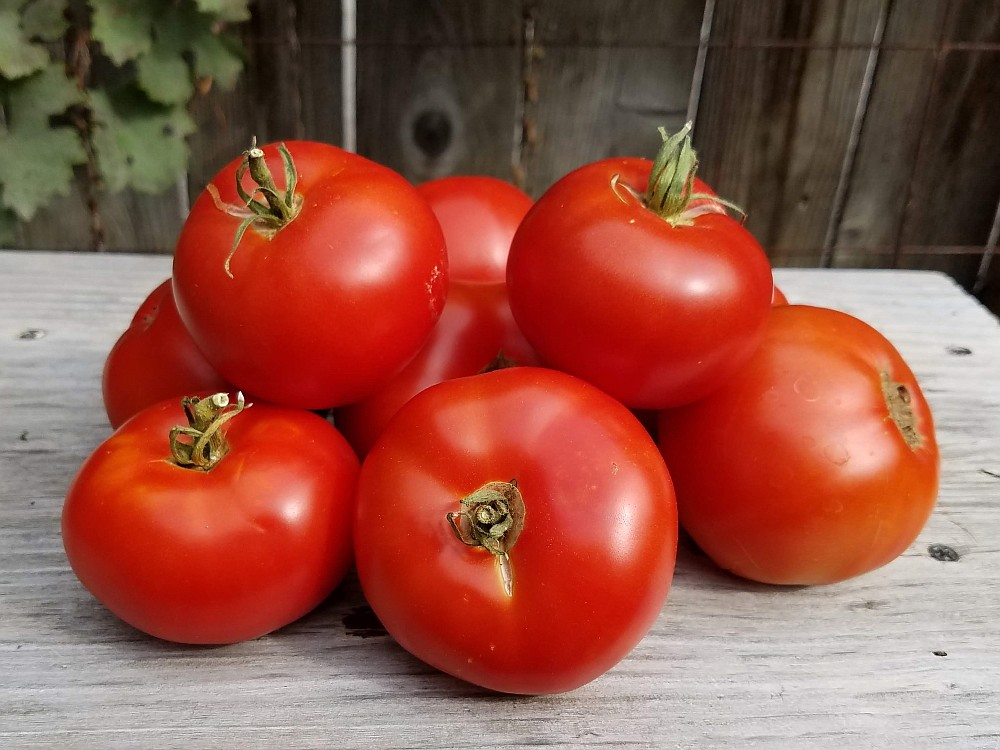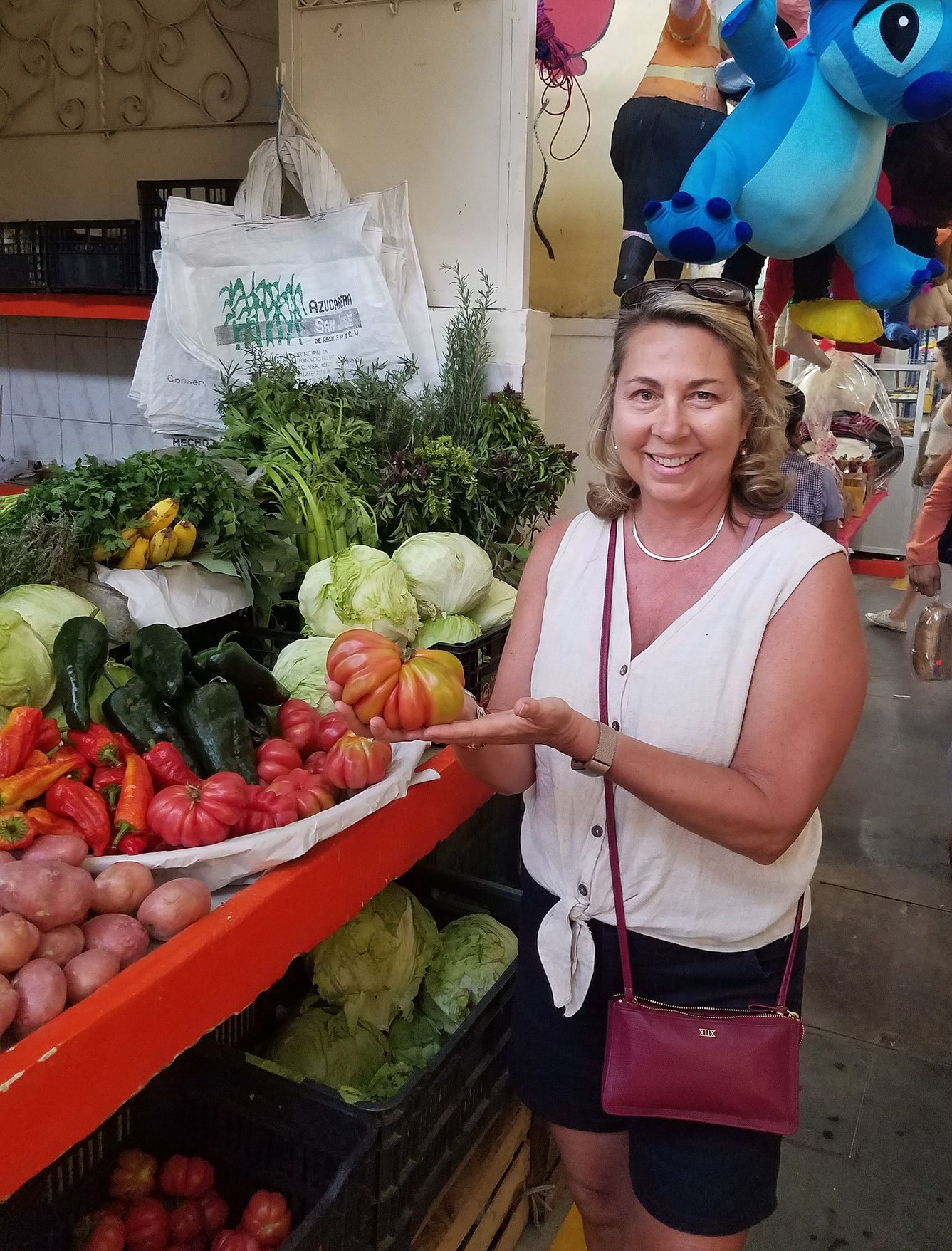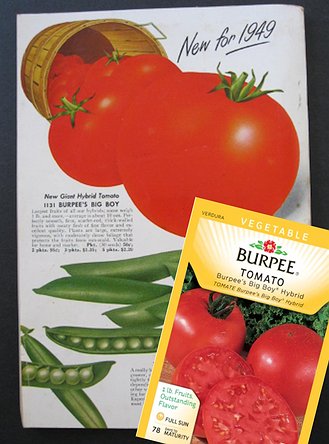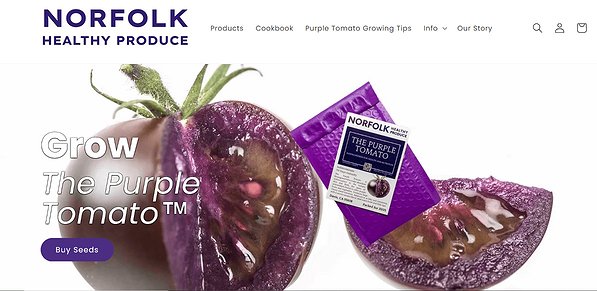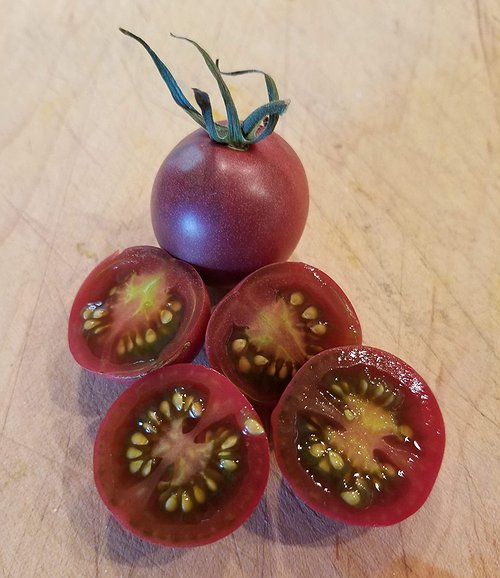Heirloom, hybrid, GM-Oh My! Understanding the differences
I was recently trolled on social media for a “too-perfect” photo of Sasha’s Altai heirloom tomatoes. Given their origins in Siberia, I promoted the tomatoes' early producing qualities and adaptability to our cooler growing conditions. The image showcased beautiful red, ripe and uniform fruit — picture perfect!
But the troll wasn’t convinced, commenting, “It looks GMO, so I’ll pass.” Everyone’s entitled to their opinion — but in this case, the facts were off. The tomatoes aren’t genetically modified (GM), and honestly, I was more curious than offended — how can anyone tell if something’s GMO just by looking at a photo?
And, of course, I took the bait and engaged.
My reply was factual about the tomatoes' non-GMO status. I also mentioned that only one U.S. company currently offers GMO tomato seeds to the gardening public — it’s not Sasha’s Altai.
The commentator retorted that I should look at Burpee’s seed catalog because “it’s full of GMO seeds.”
That’s when I realized the commentator was terribly confused. He didn’t understand the difference between a hybrid variety and a genetically modified organism, and he was undoubtedly perplexed about the meanings of open-pollinated and heirloom.
It’s not unusual; many gardeners are confused by these terms. Today, we’ll explore their meanings, and perhaps we can all play nice on the Internet, m’kay?
Open-Pollinated and Heirloom Varieties
Many vegetables, not just tomatoes, are open-pollinated, meaning they are “true to type.” They are genetically stable and consistently produce plants with the same characteristics as the parent plant.
For this reason, you can save seeds from open-pollinated varieties to grow the same plant again the following year — that’s a bonus for your seed-buying dollar!
Of course, cross-pollination can naturally occur among similar species. Still, you will obtain true seeds if the plants are grown in isolation or separated by a sufficient distance from similar species.
All heirlooms are open-pollinated but have the distinction of being passed down through generations. They may be hundreds or even thousands of years old.
They are renowned for their unique flavors, colors, shapes and sizes, vastly differing from modern, commercially bred varieties.
"Brandywine" tomatoes, "Fish" peppers and "Tennis Ball" lettuce are popular heirloom vegetables available today. But the fascinating thing is that they were also cultivated by Thomas Jefferson at Monticello over 250 years ago, from the late 1760s to the 1800s.
Another example is the centuries-old "Zapotec" tomato from Oaxaca, Mexico. Cultivated by the Zapotecs, the Indigenous peoples of the central valley of Oaxaca, this tomato was part of the pre-Columbian civilization around 2,500 years ago and is prevalent in Oaxaca today.
Selective Plant Breeding: The F1 Hybrid
First, let me say that a hybrid plant variety is not genetically modified.
An F1 hybrid is the first-generation offspring from intentional, natural cross-pollination between two genetically distinct parent plant species to achieve specific plant or fruiting characteristics.
These may include higher crop yields, natural disease resistance, uniformity, longer shelf life and many other attributes.
Hybrids often exhibit "hybrid vigor," which means they are more robust and vigorous than their parent plants, resulting in improved growth and productivity.
Seed companies spend millions and take years cultivating their highly proprietary hybrid varieties. Due to extensive cross-breeding, hybrid seeds do not breed true. This means a gardener or farmer must purchase seeds yearly to grow the same crop.
In 1926, Henry A. Wallace, the founder of the Hi-Bred Corn Company, developed the first commercially available hybrid corn variety. It produced significantly higher grain yields than open-pollinated varieties.
The first widely known hybrid tomato, "Big Boy," was introduced by W. Atlee Burpee & Company in 1949. Compared to its heirloom cousins, Big Boy was remarkably “new and improved” with its uniform shape and color. It could be shipped without damaging the fruit, qualities not found in heirlooms.
Manufactured in a Laboratory: Genetically Modified Organisms
A genetically modified organism (GMO) is any organism — a plant, animal or microorganism — whose genetic material has been altered through genetic engineering techniques. Scientists isolate specific genes from one organism and insert them into the DNA of another.
GMOs have had their DNA altered to create traits that do not exist naturally, such as introducing chemicals for pest resistance. Common GM crops include corn, soybeans, canola, sugar beets, alfalfa, cotton and potatoes.
Interestingly, the first commercially grown and FDA-approved GMO vegetable for human consumption was the "Flavr Savr" (Flavor Saver) tomato, which was created by the California company Calgene in the 1980s and made available in supermarkets in 1994.
The tomato boasted enhanced shelf life for long-distance shipping and increased fungal resistance. Simply put, it contained genes introduced by Calgene to suppress the production of enzymes that cause fruit to rot.
However, the tomato proved unprofitable and was removed from the marketplace in 1997. Subsequently, Calgene was sold to the Monsanto Corporation for $200 million.
As of 2022, U.S. foods that contain GMO ingredients must be labeled as "bioengineered food" or feature a scannable code on the packaging.
GMO Seeds
Many seed catalogs state that their seeds are non-GMO, and until recently, only agricultural growers could purchase GMO seeds. That changed in 2023 with the release of the first GMO seed available to the public: the "Purple Tomato."
Developed by Norfolk Healthy Produce, this tomato contains DNA from the snapdragon, resulting in its vibrant purple color and high levels of the cancer-fighting antioxidant anthocyanin. This cross would never occur in nature.
Many heirloom tomato varieties exhibit a rich purple color and are also high in anthocyanins, such as "Cherokee Purple" or "Black Cherry," without the need for manufacturing.
I hope this has resolved some confusion about these common gardening terms. The next time someone throws shade on your stunning heirloom tomatoes or claims they are “too perfect and GMO,” smile and share your knowledge.
After all, in the garden — and on the internet — it's always good to grow a thick skin and plant your truth.
• • •
Candace Godwin is a certified Idaho Master Gardener, garden consultant, and owner of The Coeur d’Alene Coop (thecoeurdalenecoop.com), which offers seasonal plant sales and articles on gardening and raising backyard chickens.

